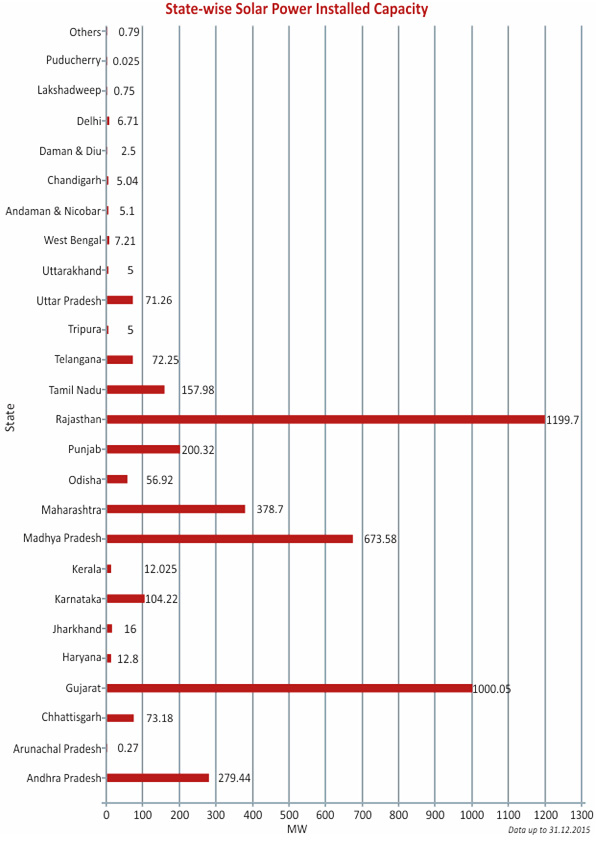Solar energy is genesis for all forms of energy. This energy can be made use of in two ways the Thermal route i.e. using heat for drying, heating, cooking or generation of electricity or through the Photovoltaic route which converts solar energy in to electricity that can be used for a myriad purpose such as lighting, pumping and generation of electricity. With its pollution free nature, virtually inexhaustible supply and global distribution- solar energy is very attractive energy resource.[read more=”Read more” less=”Read less”]Solar cells, also called photovoltaic (PV) cells by scientists, convert sunlight directly into electricity. PV gets its name from the process of converting light (photons) to electricity (voltage), which is called the PV effect. The PV effect was discovered in 1954, when scientists at Bell Telephone discovered that silicon (an element found in sand) created an electric charge when exposed to sunlight. Soon solar cells were being used to power space satellites and smaller items like calculators and watches. Today, thousands of people power their homes and businesses with individual solar PV systems. Utility companies are also using PV technology for large power stations. Solar panels used to power homes and businesses are typically made from solar cells combined into modules that hold about 40 cells.
The panels are mounted at a fixed angle facing south, or they can be mounted on a tracking device that follows the sun, allowing them to capture the most sunlight. Many solar panels combined together to create one system is called a solar array. For large electric utility or industrial applications, hundreds of solar arrays are interconnected to form a large utility-scale PV system.

[/read]
The Ministry of Skill Development and Entrepreneurship (MSDE) has made an effort to create the Skill Council for Green Jobs which is the responsible body to develop the qualification standards within India’s workforce, which shall prove effective in improving the quality of India’s employment market in the Solar PV Sector. The Ministry of New and Renewable Energy (MNRE) has also been working in tandem with the Skill Council for Green Jobs to empanel various credible Training Institutions across the country for imparting quality training in Solar PV Technology.
MNRE by launching Suryamitra programme has integrated various renewable energy institutions, which could help broaden the accessibility of renewable energy education.
CLICK HERE TO VIEW THE QUALIFICATION PACK